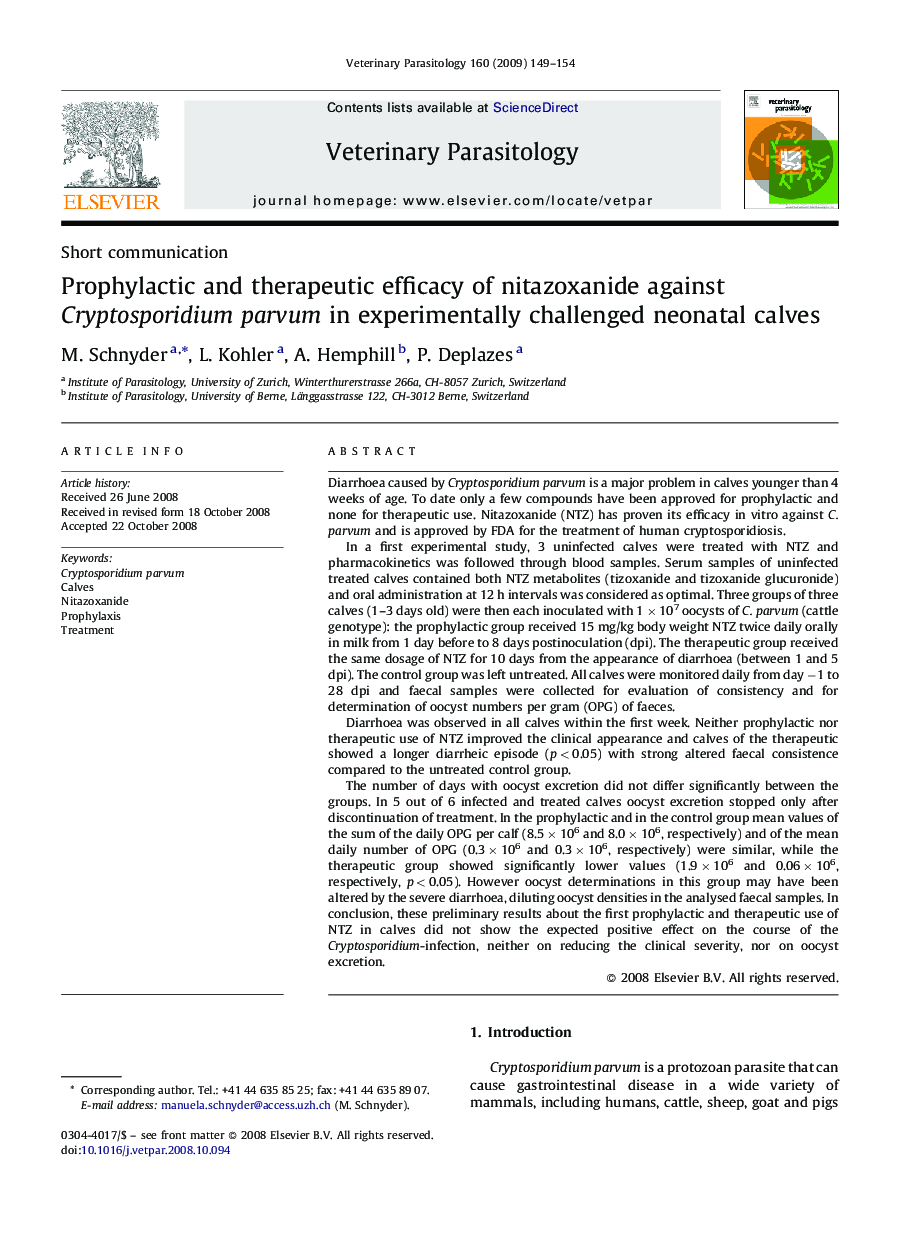| کد مقاله | کد نشریه | سال انتشار | مقاله انگلیسی | نسخه تمام متن |
|---|---|---|---|---|
| 2471316 | 1555758 | 2009 | 6 صفحه PDF | دانلود رایگان |

Diarrhoea caused by Cryptosporidium parvum is a major problem in calves younger than 4 weeks of age. To date only a few compounds have been approved for prophylactic and none for therapeutic use. Nitazoxanide (NTZ) has proven its efficacy in vitro against C. parvum and is approved by FDA for the treatment of human cryptosporidiosis.In a first experimental study, 3 uninfected calves were treated with NTZ and pharmacokinetics was followed through blood samples. Serum samples of uninfected treated calves contained both NTZ metabolites (tizoxanide and tizoxanide glucuronide) and oral administration at 12 h intervals was considered as optimal. Three groups of three calves (1–3 days old) were then each inoculated with 1 × 107 oocysts of C. parvum (cattle genotype): the prophylactic group received 15 mg/kg body weight NTZ twice daily orally in milk from 1 day before to 8 days postinoculation (dpi). The therapeutic group received the same dosage of NTZ for 10 days from the appearance of diarrhoea (between 1 and 5 dpi). The control group was left untreated. All calves were monitored daily from day −1 to 28 dpi and faecal samples were collected for evaluation of consistency and for determination of oocyst numbers per gram (OPG) of faeces.Diarrhoea was observed in all calves within the first week. Neither prophylactic nor therapeutic use of NTZ improved the clinical appearance and calves of the therapeutic showed a longer diarrheic episode (p < 0.05) with strong altered faecal consistence compared to the untreated control group.The number of days with oocyst excretion did not differ significantly between the groups. In 5 out of 6 infected and treated calves oocyst excretion stopped only after discontinuation of treatment. In the prophylactic and in the control group mean values of the sum of the daily OPG per calf (8.5 × 106 and 8.0 × 106, respectively) and of the mean daily number of OPG (0.3 × 106 and 0.3 × 106, respectively) were similar, while the therapeutic group showed significantly lower values (1.9 × 106 and 0.06 × 106, respectively, p < 0.05). However oocyst determinations in this group may have been altered by the severe diarrhoea, diluting oocyst densities in the analysed faecal samples. In conclusion, these preliminary results about the first prophylactic and therapeutic use of NTZ in calves did not show the expected positive effect on the course of the Cryptosporidium-infection, neither on reducing the clinical severity, nor on oocyst excretion.
Journal: Veterinary Parasitology - Volume 160, Issues 1–2, 9 March 2009, Pages 149–154